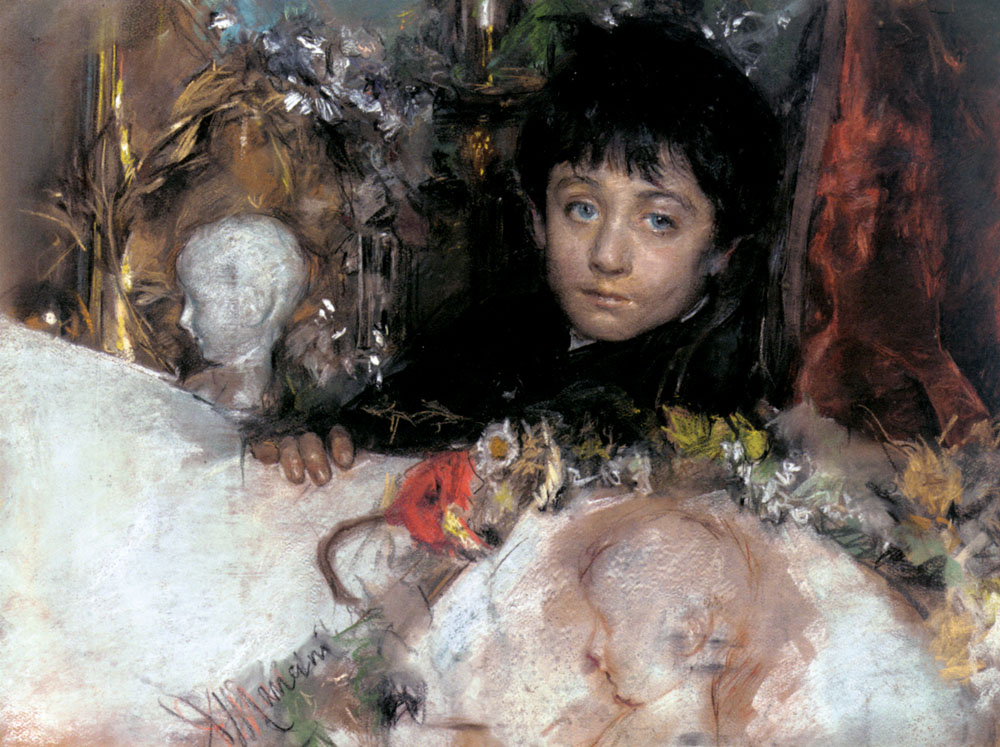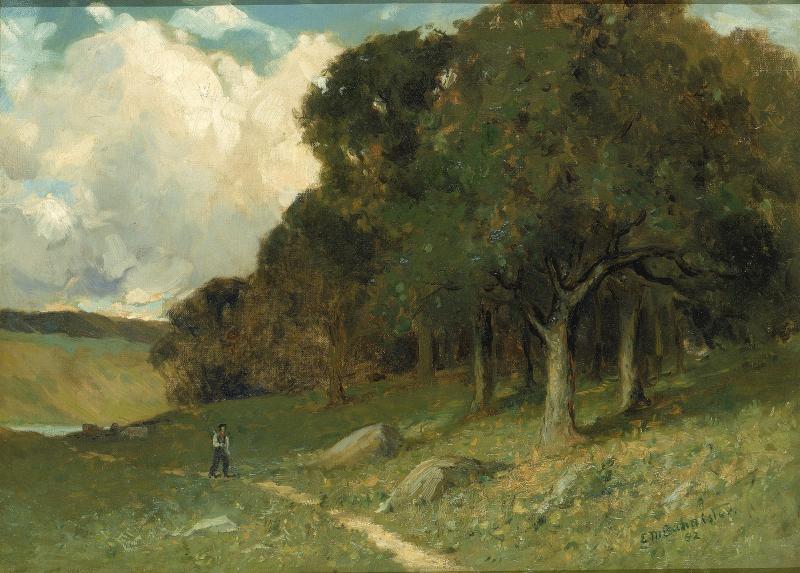by Andrew Thornton-Norris (July 2019)
Children in a Room, Edouard Vuillard, 1909
Beatrice
Standing on the headlands of the waters
Watching the days desert us
In green-brown pastures of repair
The landscape formed by prayer
With so much waiting and so much wanting
Coming to completion in contemplation
In memory of all the suffering
And now it’s here, concluding all
The hoping, it’s you, my darling daughter

Portrait of a Young Boy, Antonio Mancini
To My Son
In the middle of the night my son
Returning to me is just wanting to
Be with his father once again and I
Just finishing my prayers have been with
My Father once again in heavenly grace
La Porte Saint Martin, Eugene Galien-Laloue
Labyrinths
The theological labyrinth of
Modernity, like metropolitan
Transportation or travelling
Of any kind, requires a map or guide.
He who said the Eucharist is
A double miracle, it changes but
It looks and tastes the same, so summing up
The whole of beauty, good and truth in one.
Labyrinthine city, and the snow
Is on the ground, labyrinthine channels of
The brain, inside the maze, inhabiting
Complexity, the minotaur of the mind.

Untitled, Edward Mitchell Bannister, 1882
When Once I Strode
When once I strode in England’s fields and woods
There dreaming of what might become of me
In fear the world enclosed me with its woes
And with what it forbode though I was far away
Without protection and exposed I sought
The answers to explain to me the state
That I was in and contemplated all
That people said and wrote but nothing could
Contain more than the truth that I was loved
And cared for if I turned away from what
Was harmful to me seeking only what
Would bring me back to where I was again
«Previous Article Table of Contents Next Article»
__________________________________
Andrew Thornton-Norris is the author of The Spiritual History of English, described by The London Times as “an enjoyable, erudite and cohesive journey through the history and philosophy of English literature in 150 pithily written pages.” He is also an accomplished poet, described by the University Bookman as “refreshingly direct, in contrast to contemporary poets whose poems are like hearing half of a telephone conversation in their elusive allusions, or the poems that are really fragments of prose surrounded by ellipses…[his are] like a Renaissance painting of the Crucifixion falling off a museum wall onto a viewer.” His website is at www.thornton-norris.com.
Follow NER on Twitter @NERIconoclast
.JPG)








